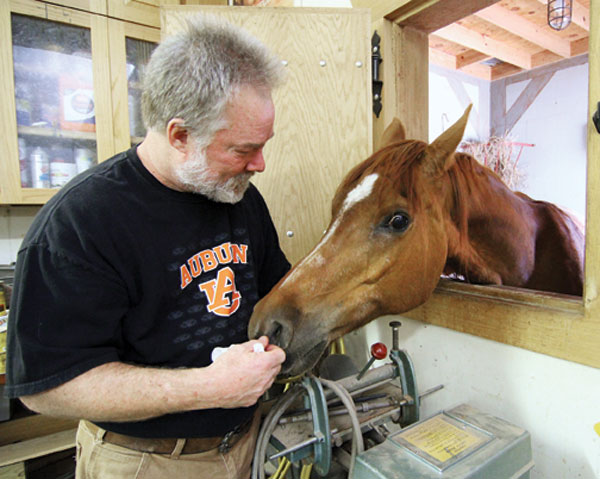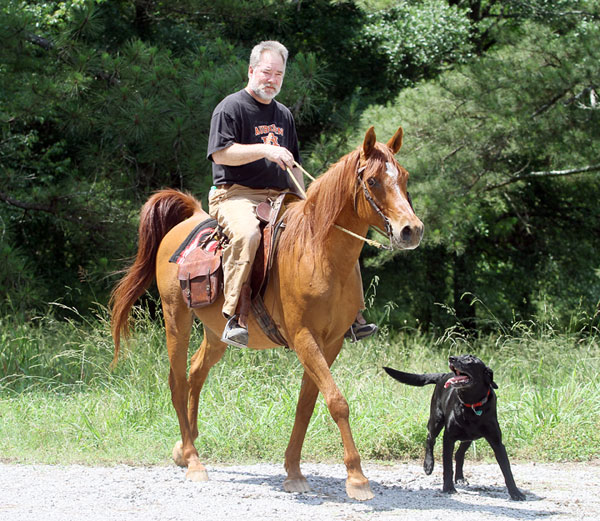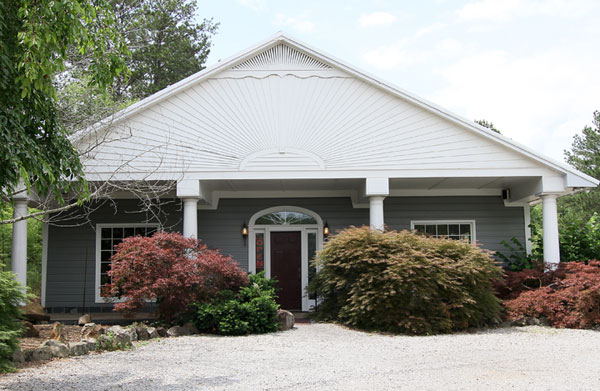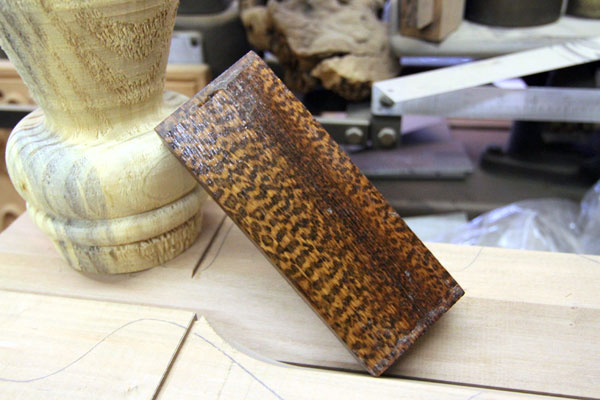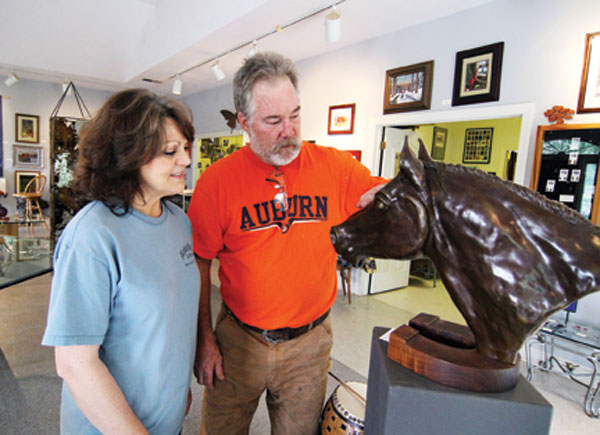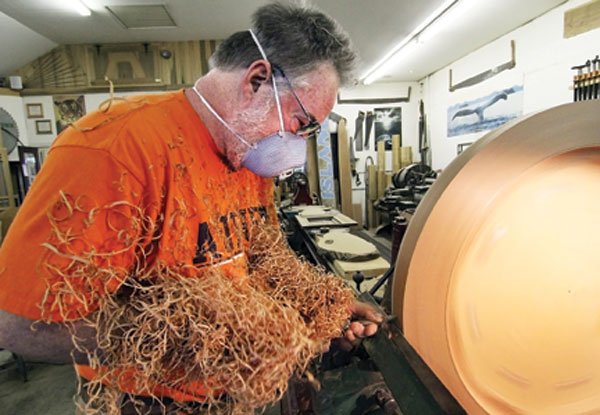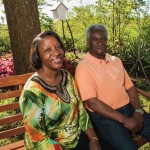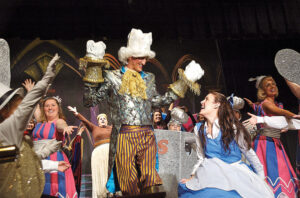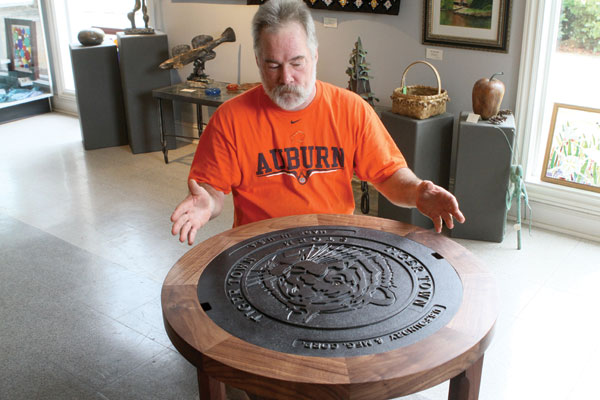
Springville home to art gallery of national note
Story by Mike Bolton
Photos by Jerry Martin
 As college kids in love tend to do, Dean Black and Sharon Williams would hold hands on the front porch of the old house that Black called home in his college days and talk of marriage and exactly how their lives would play out.
As college kids in love tend to do, Dean Black and Sharon Williams would hold hands on the front porch of the old house that Black called home in his college days and talk of marriage and exactly how their lives would play out.
What their friends and family chalked up to as a cute couple with big dreams was actually a game plan for the couple who in 1980 became Mr. and Mrs. Dean Black. It was a game plan that has come to fruition with Blackwood Gallery in Springville. “We’d sit at that old house near Auburn and talk about how we’d have an art gallery one day and I’d draw and Dean would make the frames for my artwork,” Sharon Black said in their gallery on US 11 in Springville. “That was our goal in 1977, and that is how it has played out.”
Today, Blackwood Gallery houses the couple’s work as well as the works of more than 40 other craftsmen. Visitors are often surprised to find bronze work, blown glass, leaded glass, handmade furniture and other woodworking treasures from Alabama’s top craftsmen in a place like Springville.
But it was the only location they ever considered for their gallery, both say. Traditional places where you might expect to find an art gallery, like Mountain Brook, lacked that laid-back atmosphere that is so important to both. Besides, many larger cities tend to frown on people riding their horses to work these days.
“I grew up in Hueytown on a lake with horses, and Dean lived in Homewood, but he spent a lot of time in Springville around his grandparents’ summer getaway that had a lake and horses,” Sharon said. “When we built the gallery here, in addition to Dean’s woodworking shop he built in the back part of the gallery, he built a stable where we could put the horses when we rode them to work.”
For all their dreams of one day owning a gallery, surely the couple could never have envisioned the success Dean would find in the field of woodworking. In his college days, his woodworking consisted of building custom gun stocks at what he called Deano’s Gun Shop, an out-building at the home he rented in Society Hill.
In those days, being accepted into the prestigious Alabama Designer Craftsmen group and constructing many breathtaking pieces for the Birmingham Museum of Art and the Birmingham Botanical Gardens was even too much for him to imagine.
Chances are you might have seen his work and not even known it.
“I did the columns for the Asian murals at the Birmingham Museum of Art and that opened a lot of doors for me,” he said. “I came back and built the bell stand at the museum from wood that they presented me from the 1939 World’s Fair. I followed that by building the bases for the samurai helmet collection.”
In 1996, the Birmingham Museum of Art had a coup as it became one of a handful of cities in the U.S. to land the traveling Qin collection. The artifacts from the tomb of Qin Shihauangdi, who established the first empire called China, are hailed as one of the most awe-inspiring collections in the world. The collection was taken from a burial site the size of Manhattan and included full-size horses and protecting warriors made from terracotta.
Black was chosen to do much of the accompanying woodwork that supported the treasures. That woodwork was seen by thousands of visitors from across the U.S.
The museum is home to one of the largest and most comprehensive collections of Wedgwood pottery in the world and the only collection of its kind in the United States. Black was chosen over other craftsmen to build the supporting woodwork for that, too. He also did the delicate woodwork in the museum’s Korean Room.
As word of his skills spread, Black was also chosen to construct the Tori, a large gate at the Birmingham Botanical Gardens.
Today, Black says he’s amazed at how word of his work has spread and at the inquiries he receives from across the country. His work has ranged from columns for a hunting lodge belonging to dog-racing magnate Milton McGregor to crosses and offering tables from large churches across the U.S.
All of the work is done in his shop in the back of his gallery in Springville.
“I have equipment that can do pieces substantially larger than many people can do,” he said. “It has opened doors for many of these larger projects.”
Black says he has made some inroads into one project that he really hopes never comes to be. An Auburn graduate and devout Auburn fan, he has offered to build museum-quality pieces for the school free-of-charge from the wood from trees at Toomer’s Corner should they not survive the poisoning.
“I love Auburn, but I haven’t been as diligent as I should have been in sending my money down there,” he said. “This would be a way that I could give something back. I just hope it never comes to that.”
Black said he is a firm believer that small things steer people along the paths of life and if not for a woman and her dog, there probably wouldn’t be a Blackwood Gallery today.
“I grew up an Alabama fan, but I wanted to be a veterinarian,” he said. “I went to Auburn to become a veterinarian and took all the pre-vet classes.
“I was working with a vet down there, and a woman brought in a large sheep dog that had been hit by a car. The vet did everything he could but couldn’t save the dog. He told me that I needed to watch how he handled it because it would be something I would have to do frequently in my career.
“We had this little window in the office, and I watched through the window as he told the woman and kids. I was looking at the back of his head as he was facing them. I saw him shake his head, and I saw them burst into tears.
“I knew I could handle the gory stuff, but I wasn’t prepared for that. I knew in that instant that I couldn’t be a vet. I went in and told my professors that I wasn’t even going to take the final exams because I was changing my major. I lost more than a year’s work but I changed to marketing.
“I will always be glad that I did.”












